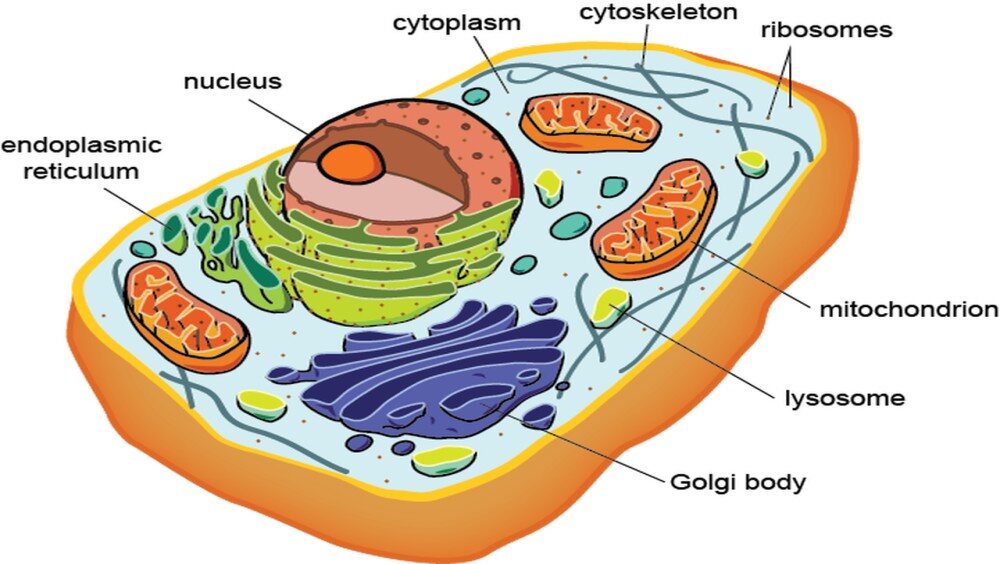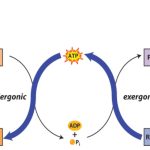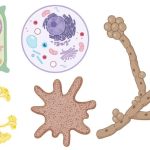| All living things are composed of cells. Cells are the basic units of life and all tissues and organs are composed of cells. They are so small that they must be viewed with a microscope. There are different types of cells. Cells can either be eukaryotic or prokaryotic. Eukaryotic cells have a nucleus and membrane bound organelles. Plant and animal cells are eukaryotes. Plant cells are generally a square shape while animal cells are usually circular. Plant cells and animal cells have evolved different organelles to perform specific functions. Plant cells have chloroplasts, a cell wall and a central vacuole. Animal cells lack these three organelles. Plant cells have chloroplasts because they make their own food. Plant cells have a cell wall so that they do not burst when the central vacuole fills up with water. Prokaryotes do not have a nucleus, and lack membrane bound organelles. They are the oldest cells on earth. Bacteria are prokaryotes. Prokaryotes often move using special structures such as flagella or cilia.Cells have many structures inside of them called organelles. These organelles are like the organs in a human and they help the cell stay alive. Each organelle has it’s own specific function to help the cell survive. The nucleus of a eukaryotic cell directs the cell’s activities and stores DNA. Eukaryotes also have a golgi apparatus that packages and distributes proteins. Mitochondria are the power house of the cell and provide the cell with energy. Both plant and animal cells have mitochondria. Lysosomes are like the stomach of the cell. They contain enzymes that digest the cell’s used parts. All of the cell’s organelles must work together to keep the cell healthy.The cell membrane is the protective barrier that surrounds the cell and prevents unwanted material from getting into it. The cell membrane has many functions, but one main function that it has is to transport materials (salts, electrolytes, glucose and other necessary molecules) into the cell to support necessary life functions. Not only does the membrane let molecules into the cell, but it also lets wastes such as carbon dioxide out of the cell. The cell membrane is made up of a phosholipid bilayer. Each phopholipid contains a hydrophilic, or water loving head and ahydrophobic, or water fearing tail. These properties that the phospholipids have and the specific orientation they are arranged in provide the cell with an selectively permeable barrier. |
| EPEExperiencesPatternsExplanations-a structure holds all of the parts of the factory in place (cytoplasm)-an outside wall gives a concrete area to the factory (cell wall)-metal beams keep the factory strong (cytoskeleton)-something takes out the trash and cleans up (lysosome)-a trash can collects the stuff until garbage day (vacuole)-assembly workers make a product (ribosomes)-other workers check the work and move it on (E.R.)-packagers box everything up and send it out (Golgi Body)-information goes to the workers from the bosses through the offices (nuclear membrane)-materials come in and products go out (cell membrane)-info. on how to make stuff is issued out (mitochondrion, chloroplast, nucleus)-some cell structures are responsible for support of the cell (the physical building of the factory)-cell structures that are responsible for transport, disposal, and production (the workers of the factory)-allow movement in and out (the loading docks of the factory)-contain information vital to the cell (the foremen, or bosses in the factory -The cell and its constituent parts are very small and difficult to grasp the concept of. A model of a factory is used to simulate the functions of the cell structures. |

Posted inCell Biology

